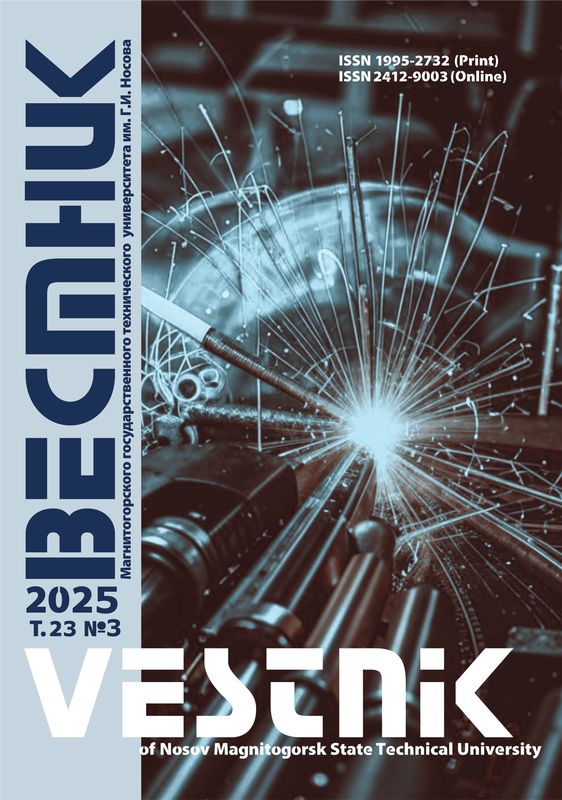DOI: 10.18503/1995-2732-2023-21-4-157-163
Abstract
Problem Statement (Relevance). The average annual volume of the metalworking tool market in Russia is 21 billion rubles. The current situation is characterized by an increasing need for metal cutting tools. However, there is a negative trend in a decrease in the share of domestic tools in the total market volume. If in 2017 the share of domestic tools was 42%, then in 2022 it decreased to 25%. Quality control of tools is a significant problem. Moreover, the problem is aggravated by tight deadlines for the preparation of production. It should be also noted that organizing large tool-making industries requires very large material costs and is not always reasonable. Therefore, it is necessary to improve the organizational and technological aspects in small batches. The solution in this situation is to use express tests directly in manufacturing tools. Objectives. Reduced time for production of pilot batches of monolithic axial cutting tools made of high-speed steels and hard alloys. Methods Applied. The research uses methods of engineering technology, tests for tool resistance, and application of wear-resistant coatings. The paper describes a complete manufacturing process of the monolithic cutting tool, including quality control and preliminary tests. The paper presents the tool in the size range (by diameter) from 6 to 16 mm. Originality. The authors developed a new research method, namely express testing of a monolithic cutting tool, and obtained new data as a result of express testing. Result. The result includes a developed procedure for express testing of monolithic cutting tools, increasing quality control of monolithic cutting tools in small batches. Practical Relevance. The developed express test method significantly reduces a period required for preparing production of monolithic cutting tools by eliminating the need for production tests with subsequent refinement of samples. Besides, the authors determined optimal test modes that provide a combination of adequacy of results (in relation to production tests) and minimum test time.
Keywords
tool, manufacturing, testing, reduction, resistance
For citation
Maslov D.A., Ovsyannikov V.E., Kulemina A.A., Kovensky I.M. Increased Efficiency of Manufacturing Monolithic Cutting Tools in Small Batches Based on Express Tests. Vestnik Magnitogorskogo Gosudarstvennogo Tekhnicheskogo Universiteta im. G.I. Nosova [Vestnik of Nosov Magnitogorsk State Technical University]. 2023, vol. 21, no. 4, pp. 157-163. https://doi.org/10.18503/1995-2732-2023-21-4-157-163
1. Karpova T. On the development of the machine tool industry. Ritm mashinostroeniya [Rhythm of Mechanical Engineering]. 2022;(2):4-6. (In Russ.)
2. Boitsov A.G. Quality assurance at all the process stages. Ritm mashinostroeniya [Rhythm of Mechanical Engineering]. 2022;(2):15-19. (In Russ.)
3. Zvyagolsky Yu.S., Solonenko V.G., Skhirtladze A.G. Osnastka dlya zatochki i kontrolya instrumentov: ucheb. posobie [Tooling for sharpening and controlling tools: study guide]. Stary Oskol: Tonkie naukoemkie tekhnologii, 2022, 244 p. (In Russ.)
4. Zvyagolsky Yu.S., Solonenko V.G., Skhirtladze A.G. Tekhnologiya proizvodstva rezhushchego instrumenta [Technology of cutting tool production]. Moscow: KnoRUS, 2012, 336 p. (In Russ.)
5. Markova E.A., Yatskevich O.K. Iznosostoikie pokrytiya dlya rezhushchikh instrumentov: ucheb. posobie [Wear-resistant coatings for cutting tools: study guide]. Minsk: Belarusian National Technical University, 2021, 153 p. (In Russ.)
6. Ramensky V.V., Filippov K.Yu. Comparative analysis of hardness test methods. Aktualnye problemy aviatsii i kosmonavtiki [Current Problems of Aviation and Astronautics]. 2022;1:28-32. (In Russ.)
7. Yaroslavtsev V.M., Yaroslavtseva N.A. Hardening technology methods as a tool of improving the cutting process. Uprochnyayushchie tekhnologii i pokrytiya [Hardening Technologies and Coatings]. 2018;(1):36-44. (In Russ.)
8. Kozlov A.A., Kozlov A.M. Raschet rezhimov rezaniya: ucheb. posobie [Calculation of cutting modes: study guide]. Lipetsk: Lipetsk State Technical University, 2017, 96 p. (In Russ.)
9. Dudak N.S., Kasenov A.Zh. Raschet rezhimov rezaniya: ucheb. posobie [Calculation of cutting modes: study guide]. Almaty: Evero, 2015, 128 p. (In Russ.)
10. Vasilyev A.S., Kutin A.A. Spravochnik tekhnologa-mashinostroitelya [Reference book for technologists and mechanical engineers]. Moscow: Innovatsionnoe mashinostroenie, 2018, 756 p. (In Russ.)












